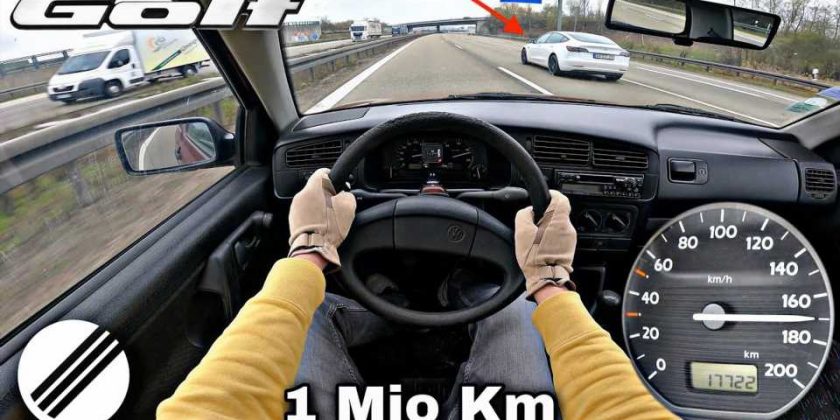…eventually.
A 26-year-old Volkswagen Golf with steel wheels isn’t a particularly interesting car, especially when the paint lacquer is peeling off and the steering wheel looks like it was chewed on by rats. However, there are two important reasons as to why we’re bringing this two-door Mk3 hatchback to your attention: it has a whopping 1,100,000 kilometers (some 683,500 miles) on the clock and we can see going at full tilt.
There are several YouTube channels focused on pushing cars to the maximum on unrestricted sections of the glorious Autobahn, but TopSpeedGermany is a bit different. Rather than hopping behind the wheel of the latest sports car or high-performance SUV, it generally prefers to test the capabilities of older cars as was the case with a 2003 E-Class diesel wagon a little over a month ago.
It was this 1995 Golf’s turn with its 1.9-liter TDI engine pushing out a mighty 67 horsepower and 92 pound-feet (124 Newton-meters) of torque. For an oil burner built more than a quarter of a century ago, it doesn’t sound too terrible for the most part, although it does become annoyingly loud as it approaches the redline.
26 years and many miles later, the compact hatch can still reach speeds well above the usual highway limits of the world. It’s obviously not going to set any Nürburgring records, but the 106-mph (170-km/h) velocity it reached is more than you’ll ever need.
This video reminds us of a decades-long tradition of two-door Golfs, a body style that was phased out during the latter half of the Mk7’s life cycle due to dwindling sales combined with cost-cutting measures.
Sooner or later, the once hugely popular TDI engine will also get the proverbial axe. Stricter emissions regulations are forcing VW to accelerate its electric agenda, and while combustion engines are not going away in the foreseeable future, diesels will certainly be phased out before gasoline mills in passenger cars.
Source:
TopSpeedGermany / YouTube
Source: Read Full Article
